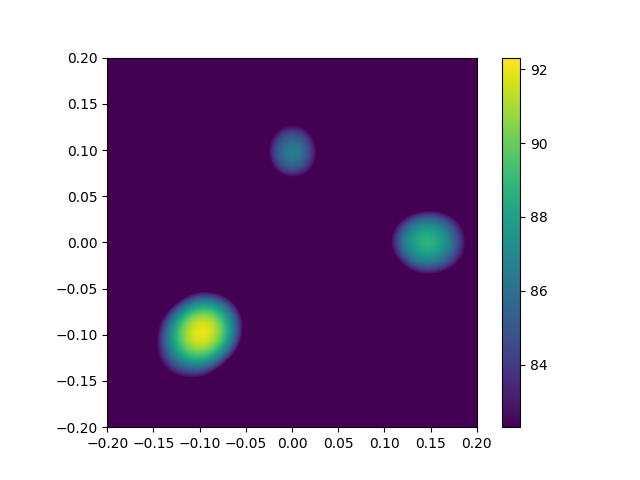Note
Go to the end to download the full example code.
Basic Beamforming – Generate a map of three sources.#
Loads the simulated signals from the three_sources.h5 file, analyzes them with Conventional Beamforming and generates a map of the three sources.
Note
The three_sources.h5 file must be generated first by running the Three sources – Generate synthetic microphone array data. example.
[('three_sources_cache.h5', 1)]
[('three_sources_cache.h5', 2)]
from pathlib import Path
import acoular as ac
import matplotlib.pyplot as plt
micgeofile = Path(ac.__file__).parent / 'xml' / 'array_64.xml'
datafile = Path('three_sources.h5')
assert datafile.exists(), 'Data file not found, run example_three_sources.py first'
mg = ac.MicGeom(file=micgeofile)
ts = ac.TimeSamples(file=datafile)
ps = ac.PowerSpectra(source=ts, block_size=128, window='Hanning')
rg = ac.RectGrid(x_min=-0.2, x_max=0.2, y_min=-0.2, y_max=0.2, z=-0.3, increment=0.01)
st = ac.SteeringVector(grid=rg, mics=mg)
bb = ac.BeamformerBase(freq_data=ps, steer=st)
pm = bb.synthetic(8000, 3)
Lm = ac.L_p(pm)
plt.figure(1)
plt.imshow(Lm.T, origin='lower', vmin=Lm.max() - 10, extent=rg.extent, interpolation='bicubic')
plt.colorbar()
plt.figure(2)
plt.plot(mg.pos[0], mg.pos[1], 'o')
plt.axis('equal')
plt.show()
Total running time of the script: (0 minutes 0.669 seconds)


